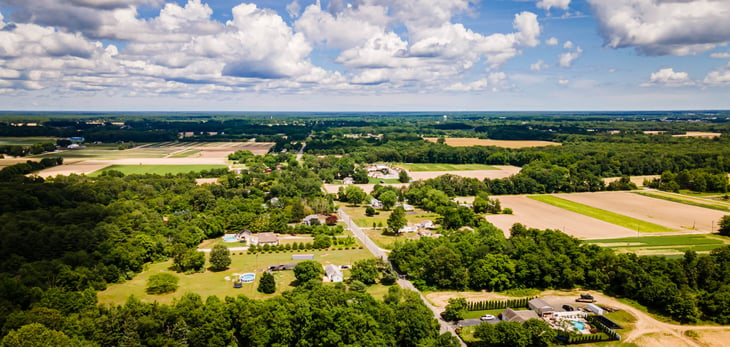
Editor’s Note: This story originally appeared on Point2.
Owning your own plot of land is a dream come true for many of us.
But, if you’re ready to make that dream a reality, you might be wondering exactly how to go about buying land.
Let’s look at the key steps you’ll need to take to become a landowner.
1. Find a Plot of Land

Nowadays, you have many tools at your disposal, with a wealth of online listing services showcasing land for sale across the country. You can also utilize local resources, such as classified ads, or simply contact sellers directly if you find a plot for sale locally.
To help the project run smoothly, you can hire a specialized real estate agent to help. They’ll have access to even more search tools and can guide you through the entire process.
2. Do Your Research and Check Recent Surveys

Once you’ve found a plot of land you like, it’s essential to check the most recent land survey. This will tell you all you need to know about the legal boundaries and easements. If a survey hasn’t been carried out in the last year or two, it’s important to have one conducted.
Don’t forget to also check recent environmental tests to ensure there are no traces of contamination present. Other factors to consider include utility access — not forgetting services like phone and internet. If you plan on building a home on your plot of land, it’s essential to know that you’ll have access to potable water, electricity and other essentials, including road access.
Finally, make sure you understand any zoning restrictions that could put a stop to your plans.
3. Secure Financing

If your chosen plot fits the bill, you’ll want to make an offer. But unless you plan to pay cash, you’ll likely need to secure financing. Lenders are a little warier about giving loans for land purchases compared to a conventional mortgage, so you’ll need to find a lender willing to take the risk.
It helps if you plan to build on your plot immediately, but even then, you can expect to pay a down payment of up to 50%. If you have building plans in place, this is likely to be closer to 20%.
Financing Options

- Construction-to-permanent (CP) loan: Ideal if you plan to build on the land; it enables you to finance the construction and the land purchase simultaneously. These are the most common loans offered by lenders for land purchases.
- Lot loan: Far less common, they require a large down payment, come with high interest rates, and are aimed at borrowers who don’t have plans to build immediately.
- Owner financing: The seller can also offer to finance the purchase. Down payments are typically lower than conventional routes, though interest rates may be higher.
4. Make an Offer

With financing secured, you can submit a written offer to the seller with confidence. As with buying a home, you can make a conditional offer, with various contingencies that need to be met before the sale can go through. The seller can also make a counteroffer, and both parties can negotiate until reaching common ground.
5. Have the Land Inspected

Like a home inspection, it’s essential to inspect the land before you sign on the dotted line. Be sure to run a title search, carry out a soil test, and double-check zoning regulations and restrictions. It’s important to hire professionals to carry out these tasks to ensure you won’t have any problems once the land is in your name.
When you’re happy with everything, you can go ahead and finalize the sale!
